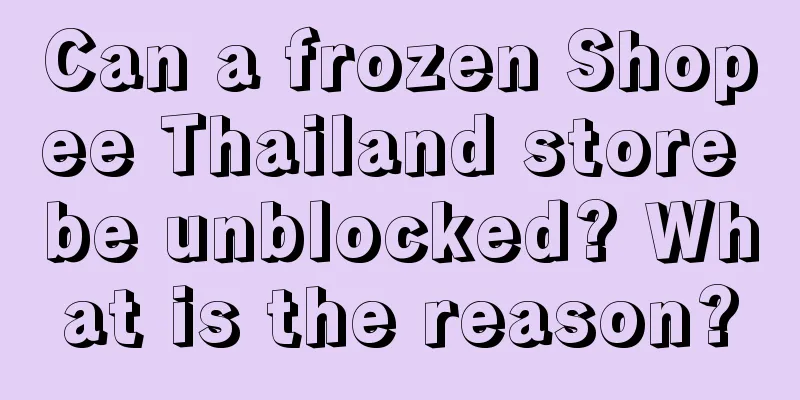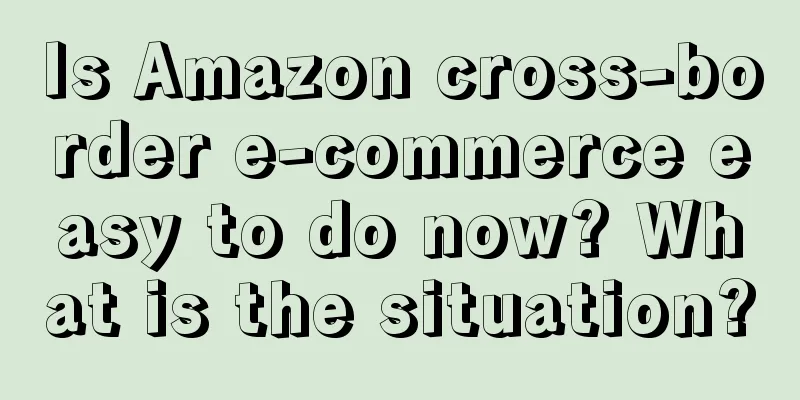Wukong is online. What is Luckin Coffee's method for IP co-branding?

In Luckin's live broadcast room, I actually saw the IP joint pre-sale of "Black Myth: Wukong"! The timing is so perfect, I have to admit it. Let me introduce some background to you: the game has a high rating and has exploded in the gaming circle. It was officially launched on August 20. Two days before the game was launched, Luckin Coffee released the new co-branded IP product "Tengyun American" on the entire network, which completely hit the hot spot. I also bought a cup, but unfortunately the surrounding areas had already been sold out, and the clerk said there were only a dozen or so left in the store. This is a bit embarrassing. The comment area in the live broadcast room was also flooded with people saying that the peripherals were all sold out. The anchor who was holding the peripherals and talking about the goods could only say "We are here to drink coffee" and "You can go to other stores to wait"... That’s all we have to say about the black monkey case. Now let’s talk about some further thinking. This IP collaboration will definitely not be able to replicate the phenomenal case of 100 million sales of Jiangxiang Latte on the same day, but it will have a great impact in the game-related circles, such as middle-aged straight men like me who have no interest in cartoon collaborations. I have to sigh that Luckin Coffee has really taken IP collaboration to the extreme.
This extreme will also inspire peers. Especially after the hit product, the sauce-flavored latte, appeared last year, many bosses’ eyes lit up and they saw this as a new method of growth. They also let their teams try to do it. Needless to say, the result is that it is definitely impossible to learn it. Why can Luckin Coffee succeed but others can’t? The core difference is the difference between single point and system. It is definitely not feasible to use IP co-branding as a single point growth method. Systematic growth is the inherent reason why Luckin Coffee can do this well. How Luckin Coffee can achieve IP co-branding through systematic growth? From the following points: 1. Why does Luckin Coffee want to do IP co-branding?Or, to put it another way, which comes first, the co-branded IP or the new product? Because the two are launched at the same time. I guess everyone will understand once this question is raised. There must be new products first, and then there will be IP joint marketing activities. In other words, IP collaboration is to promote new products, which is the core goal. If you mistakenly reverse the relationship between the two, then that’s actually a big problem, because it means you think marketing is more important than the product itself. Luckin Coffee has done a great job in product research and development. Judging from the speed at which it launches new products, it is miles ahead of its competitors. Here are some intuitive data: Luckin Coffee launched 2.2, 1.5, and 2 new products per week in 2021, 2022, and 2023, respectively, and 1.8 new products in the first quarter of 2024. Looking at Starbucks, the numbers were 0.7 and 0.6 in 2021 and 2022, respectively. So, let’s first clarify this most basic question: Launching new products is the core of growth for high-frequency, low-unit-customer consumer goods such as Luckin Coffee. A friend asked, is it possible to first have an IP co-branding idea or partnership and then develop new products? Of course there is, but it is difficult. The reason is simple: for a brand that targets C-end consumers, the decision-making logic for developing new products must be consumer-centric, not BD-centric. The same logic applies to Luckin's internal R&D process, where most new products are driven by consumer demand. Just imagine, if within the company, new products are driven by cooperation with the marketing department, or purely by ideas, it would be relatively difficult. 2. Single-point marketing activities are uselessIf you were asked to name the IP collaborations that you are familiar with, how many could you name, not just Luckin Coffee? Few people can have more than 5. This is normal, because it is very rare that people can remember the deep impression unconsciously. The ones I can probably remember are Luckin's sauce-flavored latte, Tom and Jerry, and Heytea's FENDI, nothing else. This feeling of people will lead to the wrong judgment: a brand can boost sales by carrying out a few popular marketing activities. Marketing activities must be systematic, long-term, stable, and have their own clear and implementable mechanisms, so that it is possible to create a hit product. In other words, this is the premise, and a hit product itself is something that can only be encountered by chance. Here’s a statistic: Luckin Coffee does 50-60 IP collaborations a year, almost every week, but we only remember the sauce-flavored latte. Putting Luckin Coffee aside, all e-commerce platforms’ C-end strategies and marketing activities have a main line. We need to plan the activities for each node one year in advance, not to mention Double 11 and 618. For daily activities, JD.com also has three supers (super brands, super categories, and super single products) and flash sales, as well as JD.com's small magic cubes specifically for new products. These are all systematic marketing activities. Merchants know the rules, consumers also know how to play, and JD.com also has corresponding mechanisms to improve efficiency. This normalized marketing activity is similar to the logic of Luckin Coffee's IP co-branding. The worst case scenario for a brand’s marketing campaign is that the format, theme, bait and main products are completely different each time. The reason behind these haphazard efforts is that they have not figured out what they want and lack a systematic marketing strategy. If this happens, the company's internal execution will definitely be chaotic. The tasks are different every time, and the processes and methodologies cannot be settled. Even the collaborators and the collaboration processes are different every time. If you step into the pits before, you will step into them again and again, because there is nothing to learn from the pits. So are there any brands or companies that specialize in single-point marketing activities? Yes, but the effect is hard to say. In the Chinese market, and even in the Chinese market, the biggest single marketing activity is the Spring Festival Gala. It requires high investment, is difficult, has high risks, and has uncontrollable returns. The top companies of these domestic Internet companies have basically appeared on the Spring Festival Gala, including WeChat Red Packet, Alipay Jiwufu, Baidu, Douyin, Kuaishou, Xiaohongshu, and Toutiao. Pinduoduo was originally going to appear, but later withdrew for some reason. Among these Internet companies, very few have truly positive effects. For example, WeChat red envelopes are certainly good, but the great thing about them is that the product itself is a micro-innovation. Most companies are trying to gain recognition, and it is difficult to gain anything from data attribution, so many people in charge are adjusted after completing an activity. What I want to express is that the ultimate situation of single-point marketing activities is the Spring Festival Gala, but the above-mentioned problems will arise. 3. The establishment of marketing activities depends on back-end supportLuckin Coffee has been doing marketing since the creation of its brand. IP collaboration also requires a certain amount of investment, but overall the cost of acquiring customers is not high, which can support the entire marketing activity cycle. After all, marketing costs money, and spending money requires calculating ROI. Only if you have the ability to create products with value can the ROI be considered positive. For the freshly brewed tea beverage market, the single-cup model and the single-store model are the ability to create value and be able to acquire customers in the marketing process, otherwise it would be a waste of money. 4. Creativity is a revenue leverThe entire internet is discussing the hit product, the Maotai Latte. These contents are definitely not bought by Luckin Coffee with money. For a consumer product like theirs that costs every penny, it is impossible for them to achieve miracles by working hard. There are several key points: 1. Good ideas are seedsThe key to determining the subsequent effect of a brand’s marketing activities is creativity. Looking at those popular events, there are many topics that can be extended for discussion, even controversies, as long as they are not negative, there is no problem. After the soy sauce latte became a hit, people were discussing whether it tasted like alcohol, whether one could drive after drinking it, whether it was made from Moutai, etc., all of which became hot topics. A brand’s new product actually becomes a hot topic in society, which has a lot to do with the seeds of creativity. 2. Only responsible for triggering, leaving long-tail dissemination to UGCLuckin’s important marketing activities only use a small amount of head media or KOLs to trigger the promotion, and the subsequent dissemination is left to everyone. It's not that we are confident, but we have no other choice but to do this. As a brand with 20,000 stores, we can't just rely on putting a lot of media to increase sales in marketing communications. If the new product is popular and the marketing idea is good, it can have a detonating effect. 3. Become a hotspot and get free trafficViewed from another perspective, for so many people who make a living from content, what they need most in their content creation is hot topics. As long as self-media can take advantage of hot topics, the data effects will be better. It’s that simple. Therefore, once a marketing campaign of Luckin Coffee becomes a hot topic and has more angles for interpretation or complaints, a large number of KOCs will get involved. Although their content may not be played in large quantities, the accumulated revenue from this large group is very good. This is the advantage that only leading brands have. V. ConclusionAfter analyzing Luckin Coffee’s IP collaboration, I know that it is not applicable to most brands because there are no conditions for systematic growth. So, what lessons can we learn from Luckin Coffee’s case for non-leading brands?
But this conclusion is not purely pessimistic, nor is it meant to make everyone surrender to reality. As long as you divide the market and users into small enough pieces and focus on your own vertical field, this approach can still be used as a reference. Try to apply the above points to guide your marketing strategy.
Even if you are a small brand, the same logic applies. Choose a group and market, do it systematically, long-term, and steadily, and optimize while doing it, and you will definitely see opportunities. It doesn’t matter if you don’t have a tool platform, data, or company-level support. At least you can start with planning and continue to do the same type of marketing activities, focusing on reviewing and solidifying SOPs. You have to know that a company like Meituan spends a week reviewing after each big promotion.
The manpower and expenses invested in the front-end to increase customer acquisition cannot be taken over if the product is not strong enough, and it is still a waste of resources after the back-end loses customers. If the problem can be identified as insufficient internal strength, it will be useless to force the team to grow and acquire customers. Unless you are trying out new products or making an MVP, such a small-scale investment with uncertainty is worth the cost of trial and error.
This is also the reason why we advocate a global business strategy. Every content platform has its own advantages. Otherwise, it would have died out long ago in such a fiercely competitive environment. For example, if you want to create a sensation, you must go to Douyin. Xiaohongshu will definitely not be able to do this well. But Xiaohongshu has Koc to help you pave the way and provide various interpretations and feedback. WeChat private domain is your own backyard, and users will eventually stay here. The live broadcasts, videos, and activities in the backyard serve your own people, and the logic of measuring the effect is different. That’s all. IP co-branding is an effective means of growth, provided that one has the ability to grow systematically and a mechanism to carry out marketing activities over the long term. |
<<: WeChat stores, the end is a crash
>>: Xiaohongshu's autumn promotion incentives are online, come and share the traffic
Recommend
Can the link of Amazon's follow-up sale be cancelled? What is Amazon's follow-up sale?
With the continuous growth of the Amazon platform,...
How can a novice seller on Amazon become a seller? How can a novice operate and make money?
As one of the world's largest e-commerce platf...
What does Amazon's Pan-European program mean and what does it do?
Now many friends will try to open a store on Amazo...
“Durian blind box” is on the hot search, why is durian getting more and more expensive?
The high price of durian is nothing new, and the &...
How to add Amazon variations? What is the method?
When opening a store on Amazon, many people will b...
Xiaohongshu's traffic code for the new year has been "mastered" by them
What new changes will there be in Xiaohongshu'...
High-end store brands seek change
In this article, the author takes high-end brands ...
When doing data analysis, keep this underlying logic in mind!
"The key to revealing the underlying logic of...
Yunnan is popular again because of dinosaurs fighting wolves, but many Yunnan people are sad about it
The author reviews how the classic song "Mei ...
What are the specifications of Shopee's delivery notes? How to print Shopee's delivery notes?
There are still many merchants opening stores on S...
Video Live E-commerce: How to design the logic framework of the anchor's speech
This article discusses in detail the design method...
Order Luckin Coffee on JD.com, and Meituan will cry for it
JD.com recently launched a new service that allows...
Temu adjusts cash bonus campaign terms
Temu recently adjusted its cash bonus campaign ter...
Can Chinese people buy things on etsy? How to buy things?
The things on the Etsy platform are all very perso...
What are the trends and opportunities for video accounts in 2023?
At the 2023 WeChat Open Class, the Video Account t...









